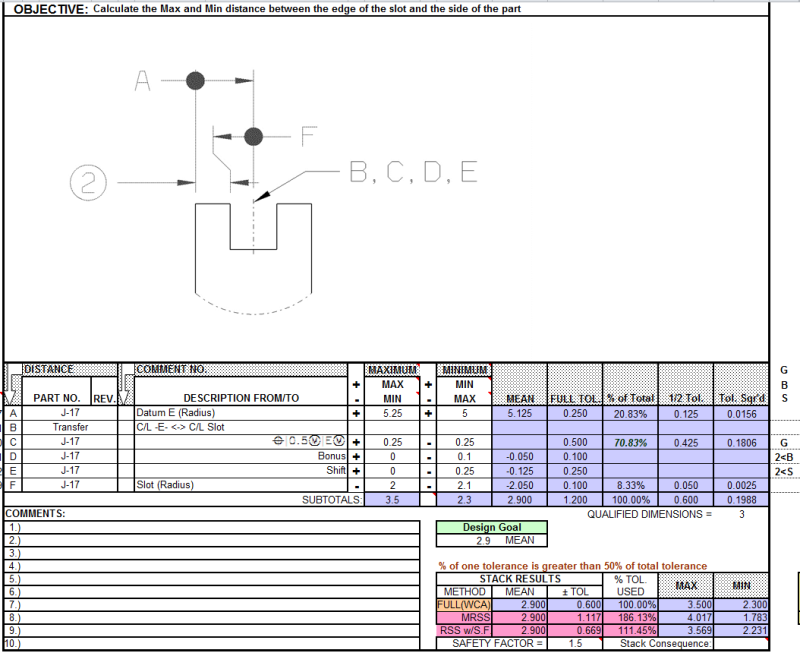One more question from the Tolerance Stackup book.
Calculate X max and min distance between the edge of the groove and the side of the part.
For the slot I used VC: 3.5 and RC: 4.9.
X max: (10.5-3.5)/2 = 3.5 -- agreement with the book
x min: (10-4.9)/2 = 2.55-book says: 2.3
The book does NOT use VC and RC calculatons, but I guess if the calculations are done correctly they should match.
What am I missing?
If I subtract the form error of the datum feature E (0.5) from the LMC (10.00) and then use RC boundary (10-0.5 = 9.5; (9.5-4.9)/2= 2.3
The question is why should I subtract the form error of "E" when I use VC and RC method and the book does not have to do it when the answer is given? (the book is using 5 (10/2) in the answer.
Part width: 10.00-10.50-datum feature E
Slot width: 4.0-4.2 , pos 0.5 (MMC) with E (MMC)
Calculate X max and min distance between the edge of the groove and the side of the part.
For the slot I used VC: 3.5 and RC: 4.9.
X max: (10.5-3.5)/2 = 3.5 -- agreement with the book
x min: (10-4.9)/2 = 2.55-book says: 2.3
The book does NOT use VC and RC calculatons, but I guess if the calculations are done correctly they should match.
What am I missing?
If I subtract the form error of the datum feature E (0.5) from the LMC (10.00) and then use RC boundary (10-0.5 = 9.5; (9.5-4.9)/2= 2.3
The question is why should I subtract the form error of "E" when I use VC and RC method and the book does not have to do it when the answer is given? (the book is using 5 (10/2) in the answer.
Part width: 10.00-10.50-datum feature E
Slot width: 4.0-4.2 , pos 0.5 (MMC) with E (MMC)

